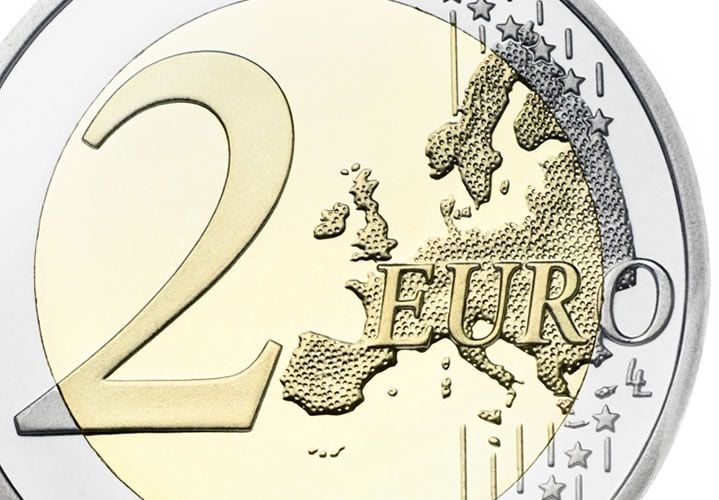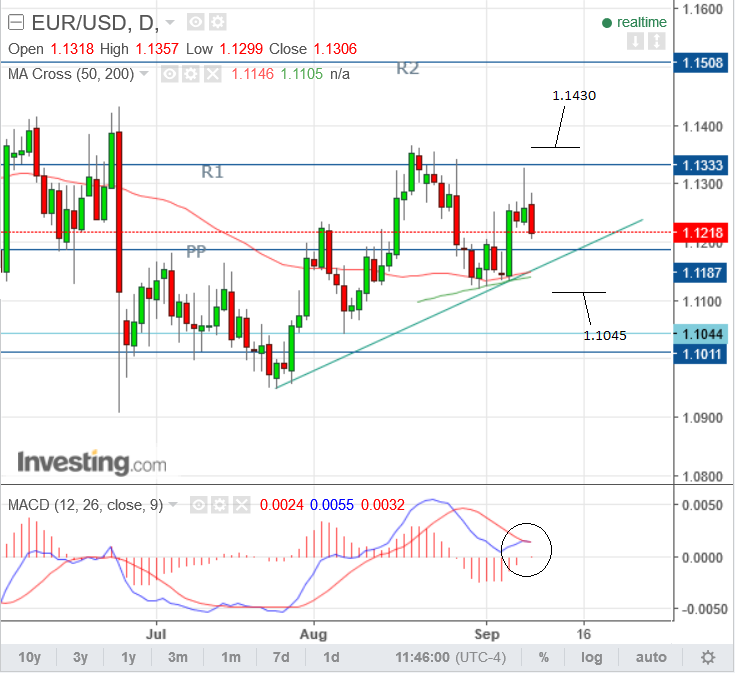EUR/USD (EUR/USD) Forecast to Maintain Soft Uptrend as Traders Await the 'Big Break'
The Euro-Dollar rate remains evenly balanced within it's long-term range but our studies do suggest the pair is prone to a slight upside bias within that range.
The EUR/USD pair is quoted at 1.1228 at the time of writing - slap in the middle of its long-term range which one would loosely identify as lying between 1.1650 and 1.0567.
We have been caught between here since January 2015 and those traders looking for a trend (other than sideways) will have to be patient.
Nevertheless, we are told that when the break-out does come, it will be sizeable.
"Once we do get a decisive breakout from this seemingly endless consolidation, either up or down, the resultant breakout should be massive," says Phil Seaton at LS Trader.
This breakout has yet to happen, but Seaton reckons it is possible that the significant move in stocks seen on Friday could be the catalyst that takes many other markets out of their long-term consolidations.
The Dollar index is currently positioned roughly in the middle of a wide trading range and continues to trade around its 50 and 200-day moving averages. The Euro is in a similar, albeit inverted position.
"The time duration of the consolidation pattern suggests that the eventual breakouts in these markets will result in some very large moves. For now, we wait for the market to point the way," says Seaton.
We would have expected the Euro to be stronger at this stage having observed Fed Governor Brainard kill off hopes for a September interest rate rise in a speech delivered to an audience in Chicago on Monday the 12th.
The US Dollar rose at the end of last week after several Fed officials - led by Boston Fed president Eric Rosengren - suggested interest rates should be increased soon - meaning the September meeting.
"With the Fed’s Brainard (dove, voter) remaining true to form and not displaying any undue hawkish shifts on Monday, the dollar may continue to remain vulnerable in the near term, perhaps all the way into the FOMC next week," says Emmanual Ng at OCBC.
However, USD weakness appears to be limited thus far suggesting to us that this pair is not going anywhere fast.
The Euro remains supported thanks to a lack of urgency at the European Central Bank (ECB) on introducing fresh EUR-negative policies.
EUR/USD: Slight Bias Higher
As a result, EUR/USD fell, wiping out its gains from the previous day, as the Dollar rose from increased safe-haven demand and Fed hike bets.
The relatively balanced outlook for the pair fundamentally, is reflected in the directionless EUR/USD price chart, which shows the pair still oscillating in a range-bound environment.
Currently it is possible to note a slight bias to the upside after a combination of the 50 and the 200-day moving averages provided support to the exchange rate at the 1.1150 lows:
A break above the 1.1367 highs would lead to more upside to a target at the 1.1430 level, and would establish a peak and trough progression higher.
Alternatively, move below 1.1121, breaking below the cluster of moving averages, would lead to a continuation down to a probable target at 1.1045.
From an economic data perspective next week promises to be thin for the Euro.
The key release is inflation on Thursday, which is forecast to remain at 0.2%, and could impact if higher.
If marginally lower it may not impact too much, as Draghi’s warning about the threat of low inflation on Thursday already prepared markets.
For the US, the main releases are Retail Sales and Core Retail Sales, in August, out on Thursday, which are expected to show a 0.1% and 0.2% rise respectively.
Philadelphia Fed Manufacturing in September, also out on Thursday, is forecast to come out at 2.0, which is the same as previously.
Producer Prices in August are forecast to show a 0.1% rise
Any results above what is expected in the inflation data is likely to increase the probability of the Federal Reserve moving forward with a rate hike.
This will strengthen the dollar as higher interest rates tend to attract more foreign capital inflows seeking higher yield.






